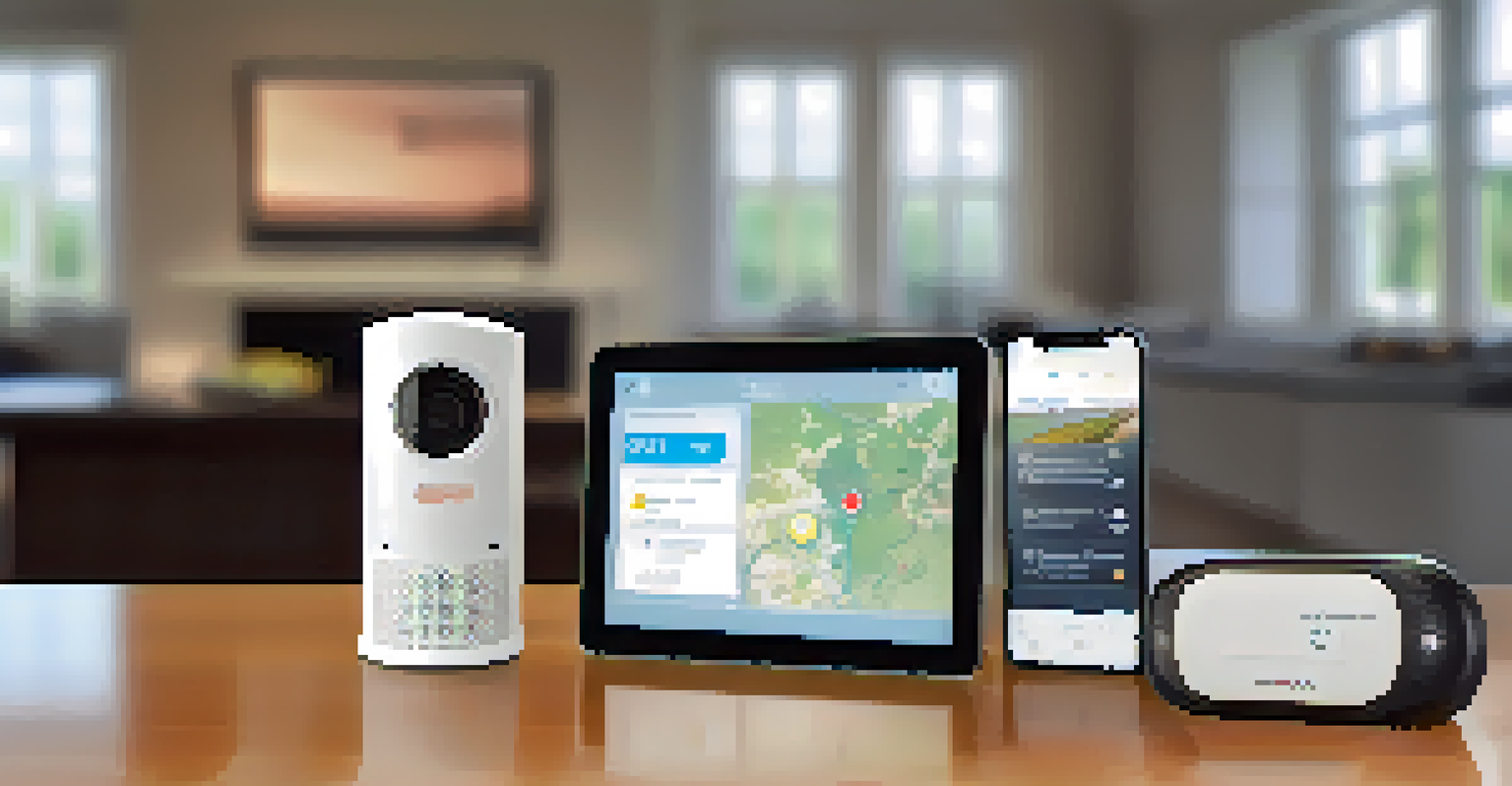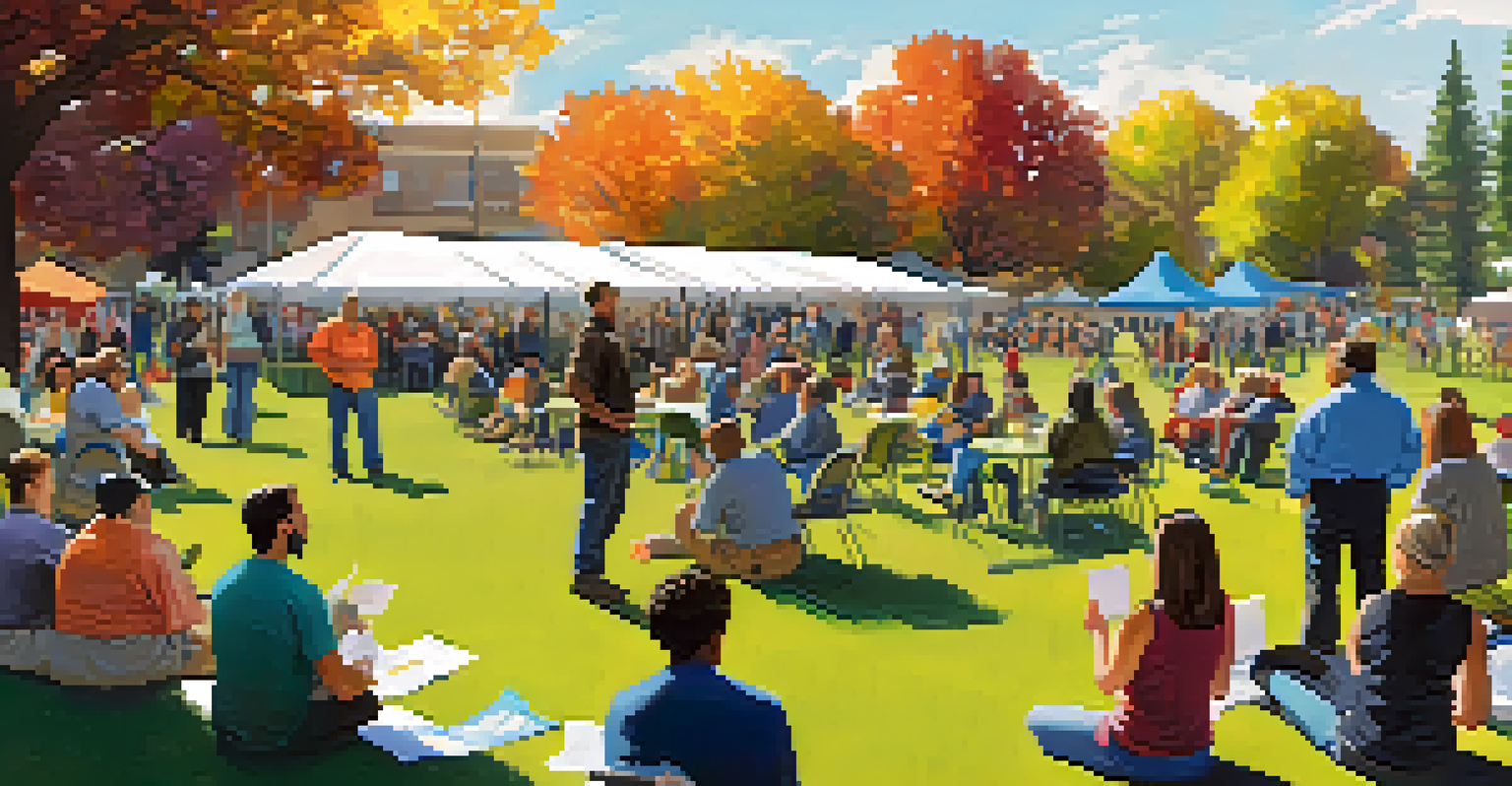The Role of Technology in Boulder's Disaster Preparedness

Understanding Boulder's Unique Disaster Risks
Boulder, Colorado, is known for its stunning landscapes, but it also faces unique disaster risks such as wildfires, floods, and winter storms. Each of these hazards requires a tailored approach to preparedness. Understanding these risks is the first step in creating effective strategies for the community. By recognizing the specific threats, residents can better equip themselves and their families for emergencies.
Preparedness is the key to survival. It’s not just about having a plan; it’s about being informed and ready to act when disaster strikes.
The geography of Boulder contributes to its vulnerability, especially with the striking Flatirons and the surrounding foothills. These features can exacerbate flooding and fire risks. Local authorities and agencies continuously assess these threats, making it crucial for citizens to stay informed. Awareness is empowering; when residents know what to expect, they can prepare accordingly.
Moreover, the changing climate adds another layer of complexity to disaster planning in Boulder. Weather patterns are becoming less predictable, making it essential for the community to invest in advanced technology for better forecasting. This proactive approach can significantly reduce the impact of disasters when they occur.
The Role of Communication Technology in Emergencies
In times of crisis, communication can make all the difference. Technology has transformed how Boulder's residents receive emergency alerts and updates. Systems like the Boulder Alert program send texts and emails to inform people about potential dangers, ensuring everyone stays in the loop. This rapid dissemination of information is vital for timely evacuations or safety precautions.

Social media platforms also play a significant role in disaster communication. During emergencies, local agencies often utilize platforms like Twitter and Facebook to share real-time information. This creates an interactive space where residents can ask questions and get answers quickly. The immediacy of social media helps build a connected community that can respond effectively to crises.
Boulder's Unique Disaster Risks
Boulder faces specific threats like wildfires and floods that require tailored preparedness strategies.
Additionally, mobile applications designed for emergency preparedness provide users with crucial information at their fingertips. These apps can offer checklists, emergency contacts, and maps of evacuation routes. By integrating communication technology into disaster preparedness, Boulder residents can feel more secure knowing they have the tools to respond efficiently.
Smart Technology for Enhanced Disaster Response
Smart technology is revolutionizing disaster response in Boulder. Devices like smart smoke detectors and home security systems can alert homeowners to dangers before they escalate. For instance, a smart smoke detector can send a notification to your phone even if you're not home, allowing for a quicker response. This technology creates a more proactive approach to home safety.
In the face of disaster, technology is not just a tool; it’s a lifeline that connects us and empowers us to respond effectively.
Additionally, the use of drones for monitoring and assessment during emergencies is gaining traction. Drones can access hard-to-reach areas, providing real-time visuals to emergency responders. This capability allows for better resource allocation and quicker decision-making when every second counts. It's like having an eye in the sky that helps protect the community.
Furthermore, the integration of IoT (Internet of Things) devices can enhance situational awareness. For example, sensors in the environment can detect changes in conditions, such as rising water levels or air quality. These insights enable local authorities to act swiftly and efficiently, keeping residents safe and informed.
Data Analytics for Informed Decision-Making
Data analytics is a powerful tool that helps Boulder prepare for and respond to disasters more effectively. By analyzing historical data on past events, authorities can identify patterns and anticipate future risks. This information guides resource allocation and helps craft targeted preparedness strategies. It’s like looking at a roadmap, where past journeys inform future travels.
Moreover, predictive analytics can forecast potential disaster scenarios, allowing for proactive measures. For instance, if data shows an increased likelihood of wildfires due to dry conditions, officials can implement preventative actions ahead of time. This foresight can save lives and property by ensuring the community is prepared before disaster strikes.
Tech Enhances Emergency Response
Advanced communication technology and smart devices empower residents to respond effectively during crises.
Additionally, community engagement through data collection can enhance preparedness. Local residents can report real-time conditions via apps, contributing to a more comprehensive understanding of the situation. This crowd-sourced data not only empowers citizens but also provides critical insights to emergency management teams.
Training and Simulation Technologies for First Responders
Training first responders effectively is crucial for disaster preparedness, and technology plays a key role in this process. Virtual reality (VR) and augmented reality (AR) simulations allow responders to practice their skills in realistic scenarios. This immersive training helps them prepare for high-pressure situations they might face during actual disasters. It's like a flight simulator for pilots, providing a safe space to learn and adapt.
Moreover, these technologies can be tailored to specific local hazards. For instance, simulations can mimic a wildfire approaching the city, allowing responders to strategize and refine their tactics. This specificity enhances the team's readiness and confidence when real emergencies arise. It’s all about ensuring that when the moment comes, they’re not just reacting—they’re prepared.
Additionally, ongoing training using these technologies fosters a culture of continuous improvement. As new challenges emerge, such as new types of disasters or changes in community demographics, training can evolve accordingly. This adaptability is vital in a rapidly changing world, ensuring that Boulder’s first responders are always equipped to protect their community.
Community Engagement through Technology
Community engagement is a cornerstone of effective disaster preparedness, and technology facilitates this connection. Online platforms and community forums allow residents to share experiences, tips, and resources related to disaster readiness. This exchange of information builds a sense of community and encourages collective action in times of need. It’s like a neighborhood potluck, where everyone brings something to the table.
Moreover, local organizations often host workshops and training sessions via webinars or live streams. These virtual gatherings make it easier for residents to participate, regardless of their schedules. By providing accessible information, Boulder empowers its citizens to take charge of their own disaster preparedness. The more informed individuals are, the more resilient the community becomes.
Community Engagement is Key
Engaging the community through technology fosters resilience and collective action in disaster preparedness.
Finally, social media campaigns that promote preparedness initiatives can reach a wider audience. Engaging storytelling through videos and posts can inspire residents to create their own emergency plans. In this way, technology not only informs but also motivates, making disaster preparedness a communal effort and a shared responsibility.
The Future of Disaster Preparedness in Boulder
Looking ahead, the future of disaster preparedness in Boulder is promising, especially with ongoing technological advancements. Innovations such as AI-driven predictive models can significantly enhance risk assessment capabilities. By analyzing vast amounts of data, AI can identify potential threats and suggest preventative measures. This could revolutionize how the community prepares for disasters.
Additionally, as technology continues to evolve, so will the tools available to Boulder's residents. From smart home systems to advanced mobile applications, the future is bright for those looking to enhance their preparedness. Staying ahead of the curve means that Boulder can adapt to emerging challenges with confidence. It’s about creating a toolkit that evolves alongside the community’s needs.

Ultimately, a collaborative approach that combines technology, community engagement, and government support will shape the future of disaster preparedness in Boulder. By leveraging these resources, the community can build resilience and ensure safety for all its residents. As Boulder embraces technology, it sets a powerful example of how innovation can safeguard lives and property in the face of adversity.